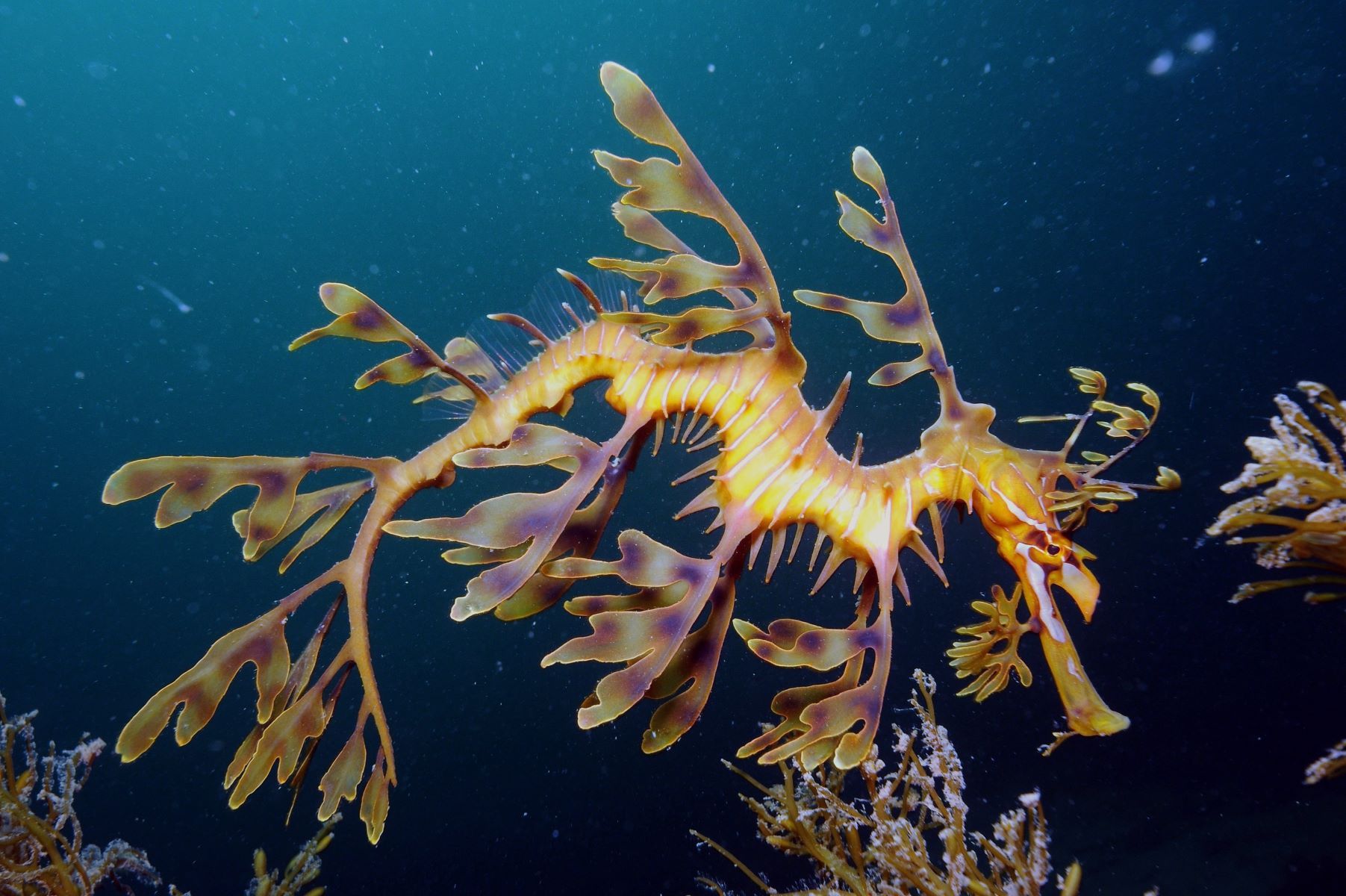
Ever wondered about the mystical creatures lurking beneath the ocean's surface? Well, let me introduce you to one of the ocean's most enchanting inhabitants: leafy sea dragons. These creatures, with their leaf-like appendages, effortlessly blend into the seaweed and kelp forests they call home, making them masters of disguise. But what else is there to these elusive beings besides their unique appearance? From their peculiar feeding habits to their surprising reproductive strategies, leafy sea dragons are full of surprises. Ready to dive deep into the world of these fascinating creatures? Buckle up, because we're about to uncover 20 amazing facts that will leave you in awe of the incredible leafy sea dragon.
What Are Leafy Sea Dragons?
Leafy sea dragons, or Phycodurus eques, are fascinating marine creatures known for their unique appearance. Resembling a piece of drifting seaweed, these animals are perfectly camouflaged within their natural habitats along the southern and western coasts of Australia. Despite their plant-like looks, leafy sea dragons are actually fish, closely related to seahorses and pipefish.
- Leafy sea dragons can grow up to 24 cm (9.4 in) in length.
- They are named for their leaf-like protrusions, which are not used for swimming but for camouflage.
Habitat and Diet
These creatures prefer shallow, temperate waters rich in seaweed and seagrass, where they can blend in seamlessly with their surroundings. Their diet mainly consists of tiny crustaceans and plankton, which they suck into their long, pipe-like snouts.
- Leafy sea dragons are found exclusively in Australian waters.
- They rely on their camouflage to protect themselves from predators.
Reproduction and Lifecycle
Unlike seahorses, where males carry the eggs, leafy sea dragon males incubate eggs on the underside of their tails. After a gestation period, tiny, fully formed leafy sea dragons are born, ready to fend for themselves.
- Male leafy sea dragons are responsible for egg incubation.
- The gestation period for leafy sea dragons lasts about four to six weeks.
Conservation Status
Despite their fascinating nature, leafy sea dragons face threats from pollution, habitat destruction, and the aquarium trade. They are currently listed as "Near Threatened" on the IUCN Red List.
- Leafy sea dragons are considered Near Threatened.
- Conservation efforts are in place to protect their natural habitats and regulate aquarium trade.
Unique Behaviors and Characteristics
Leafy sea dragons exhibit several unique behaviors and characteristics that set them apart from other marine creatures. Their ability to mimic floating seaweed is not only a defense mechanism but also a hunting strategy, allowing them to approach prey undetected.
- They swim in a vertical position, unlike most fish.
- Leafy sea dragons cannot grasp objects with their tails, a feature common in seahorses.
Why Are Leafy Sea Dragons Popular in Aquariums?
Their striking appearance and gentle nature make leafy sea dragons popular among aquarium enthusiasts. However, their specific habitat and diet requirements make them challenging to care for in captivity.
- Leafy sea dragons require specialized diets and tank conditions to thrive in aquariums.
- They are often considered a symbol of good luck in marine aquariums.
Research and Studies
Scientists continue to study leafy sea dragons to understand more about their behavior, reproduction, and how they can be better protected in the wild. These studies are crucial for developing effective conservation strategies.
- Genetic research helps in understanding the breeding patterns of leafy sea dragons.
- Advances in tracking technology allow researchers to monitor their movements and habitat use.
The Future of Leafy Sea Dragons
Efforts to conserve leafy sea dragons and their habitats are ongoing. Through research, public awareness, and stricter regulations on trade, there is hope that these enchanting creatures will continue to thrive in their natural environments.
- Public aquariums play a significant role in educating people about leafy sea dragons.
- International cooperation is key to the conservation of leafy sea dragons.
Interesting Facts
Leafy sea dragons are full of surprises. Here are a few more interesting facts about these extraordinary creatures:
- Despite their fragile appearance, leafy sea dragons can live up to 10 years in the wild.
- They have no known natural predators, thanks to their excellent camouflage.
- Leafy sea dragons do not have teeth or a stomach; they feed by sucking up their food whole.
- Each leafy sea dragon's pattern of leafy appendages is unique, much like a human fingerprint.
A Glimpse into the Mystical World of Leafy Sea Dragons
Leafy sea dragons, those ethereal creatures of the deep, have a way of capturing our imagination like few others in the marine kingdom. With their unique appearance and fascinating behaviors, they remind us of the endless wonders beneath the waves. From their expert camouflage to their gentle demeanor, every fact about them adds another layer to their mystique. They're not just fish; they're underwater masterpieces, blending art and nature in a dance of survival and beauty. As we've journeyed through their world, it's clear they hold secrets still waiting to be uncovered. Their existence challenges us to think differently about our oceans and the creatures that inhabit them. So, next time you gaze into the blue depths, remember the leafy sea dragons, those hidden gems of the ocean, and consider the mysteries still lurking in the unexplored corners of our planet.
Was this page helpful?
Our commitment to delivering trustworthy and engaging content is at the heart of what we do. Each fact on our site is contributed by real users like you, bringing a wealth of diverse insights and information. To ensure the highest standards of accuracy and reliability, our dedicated editors meticulously review each submission. This process guarantees that the facts we share are not only fascinating but also credible. Trust in our commitment to quality and authenticity as you explore and learn with us.


